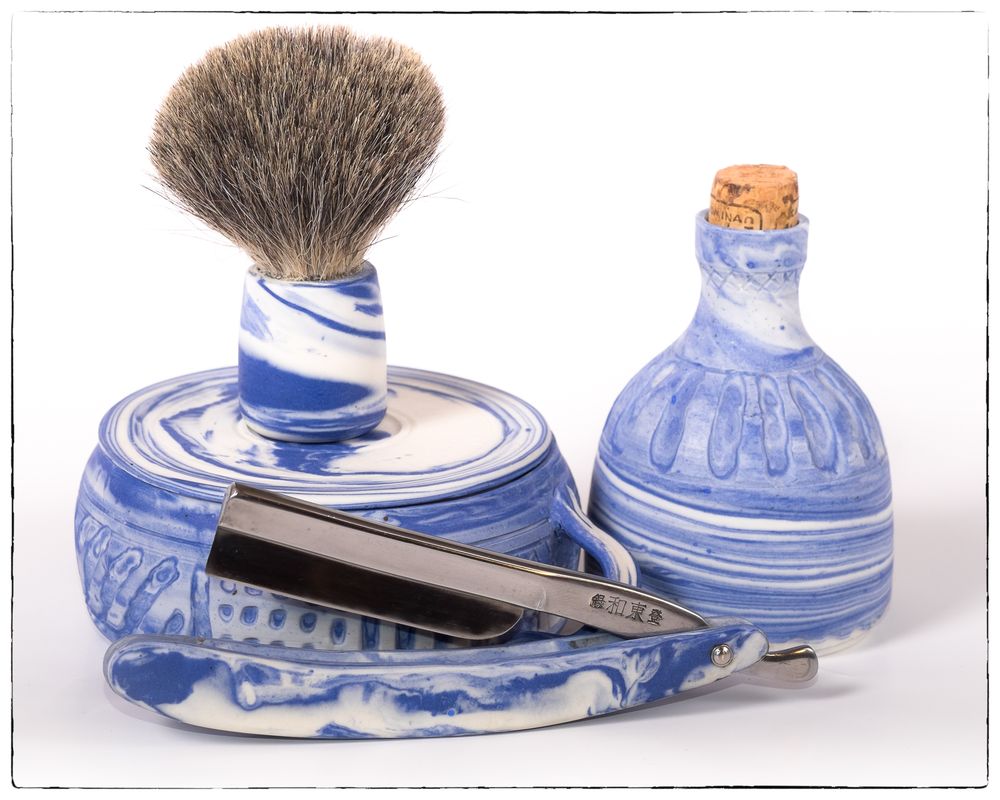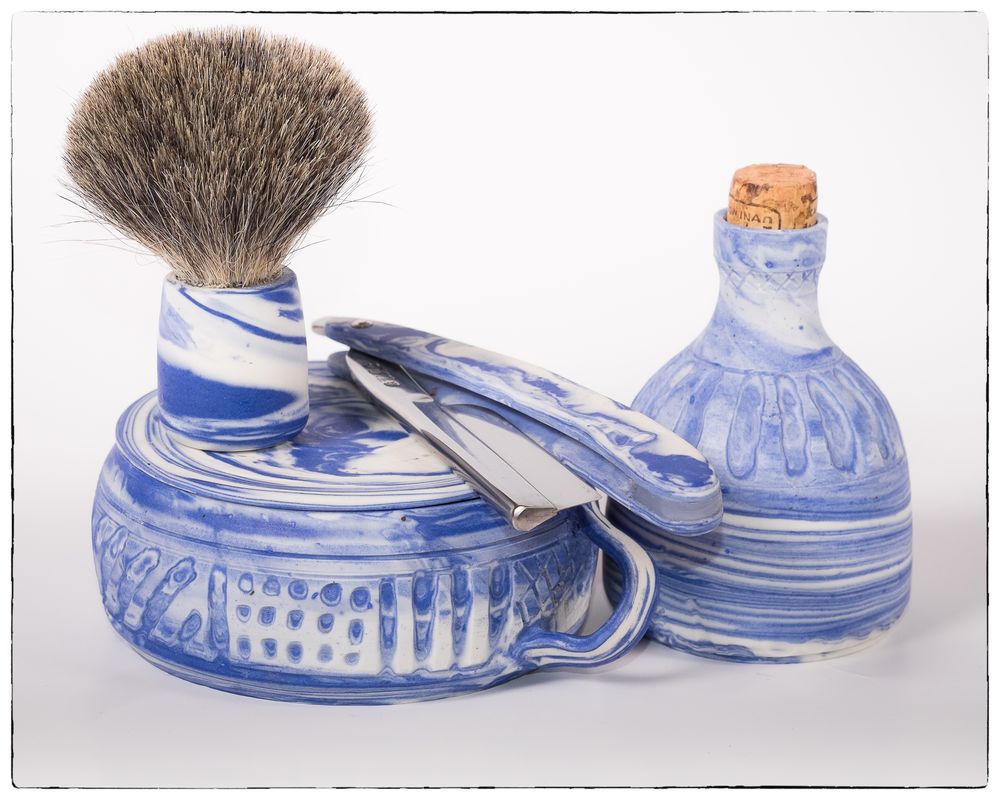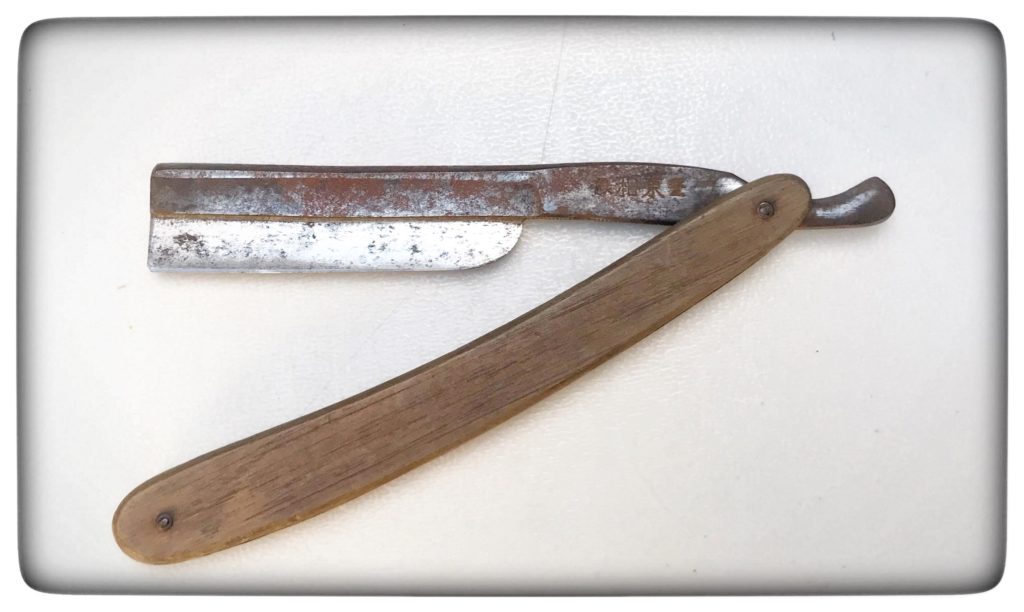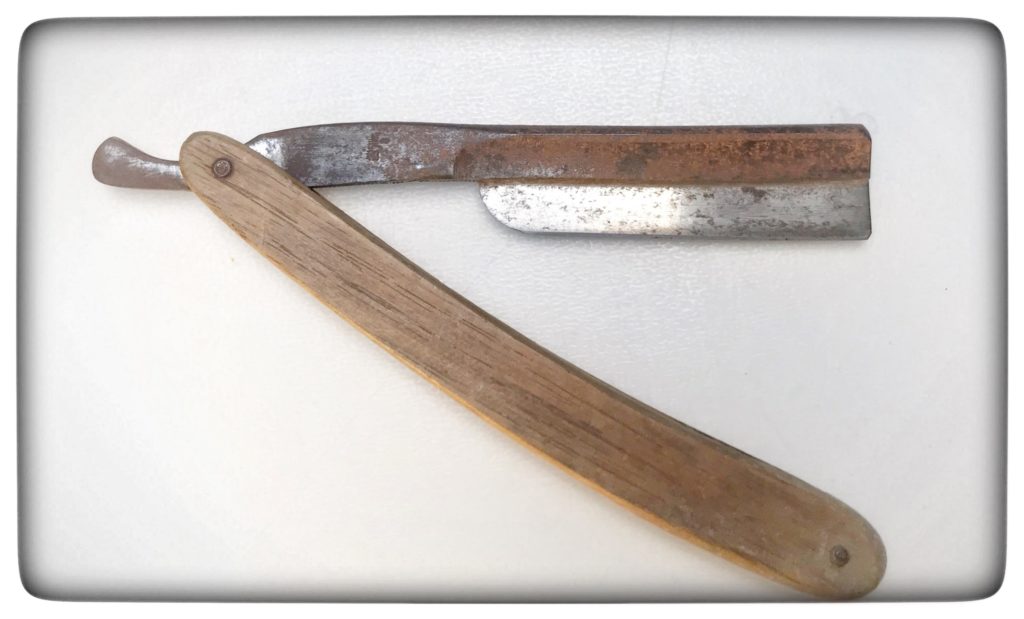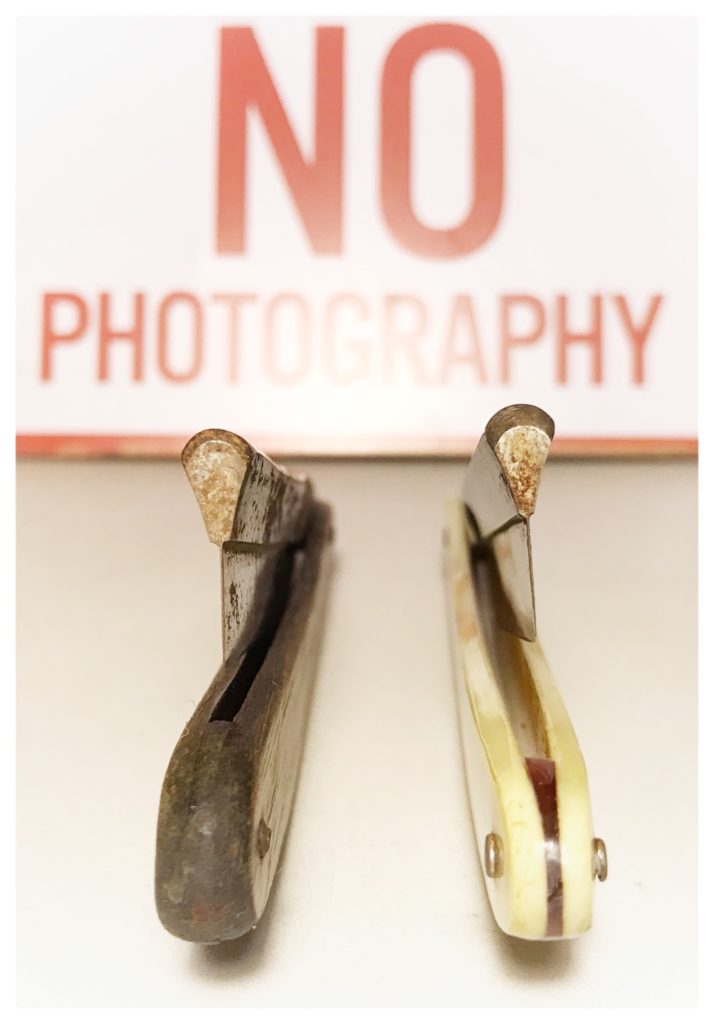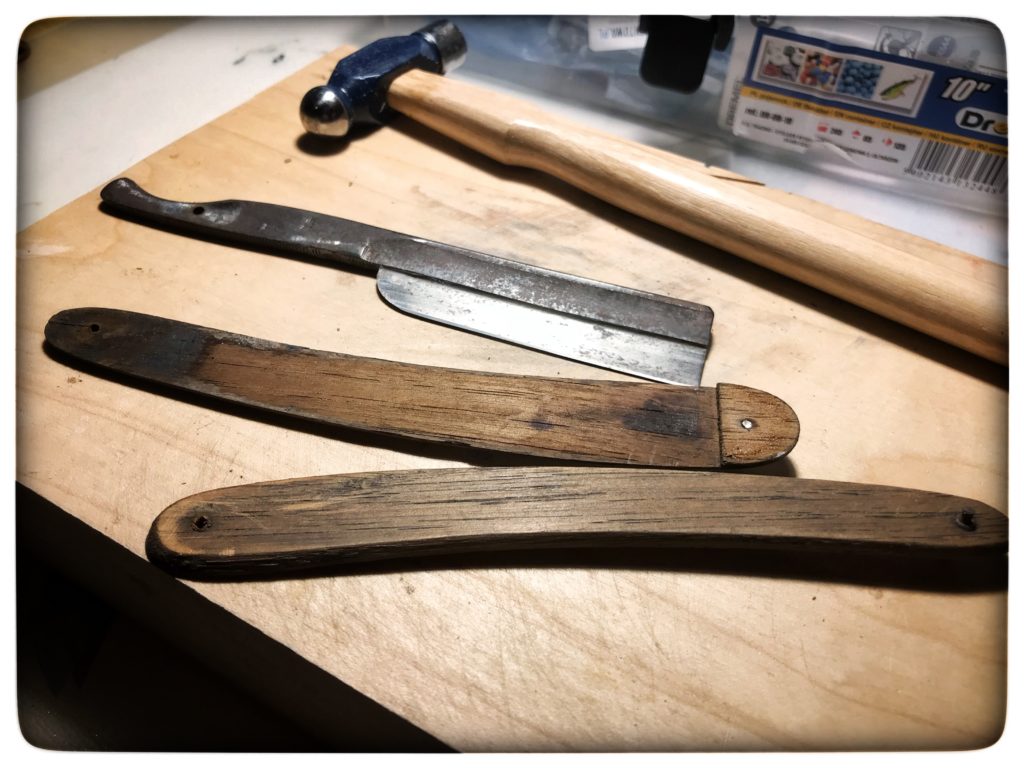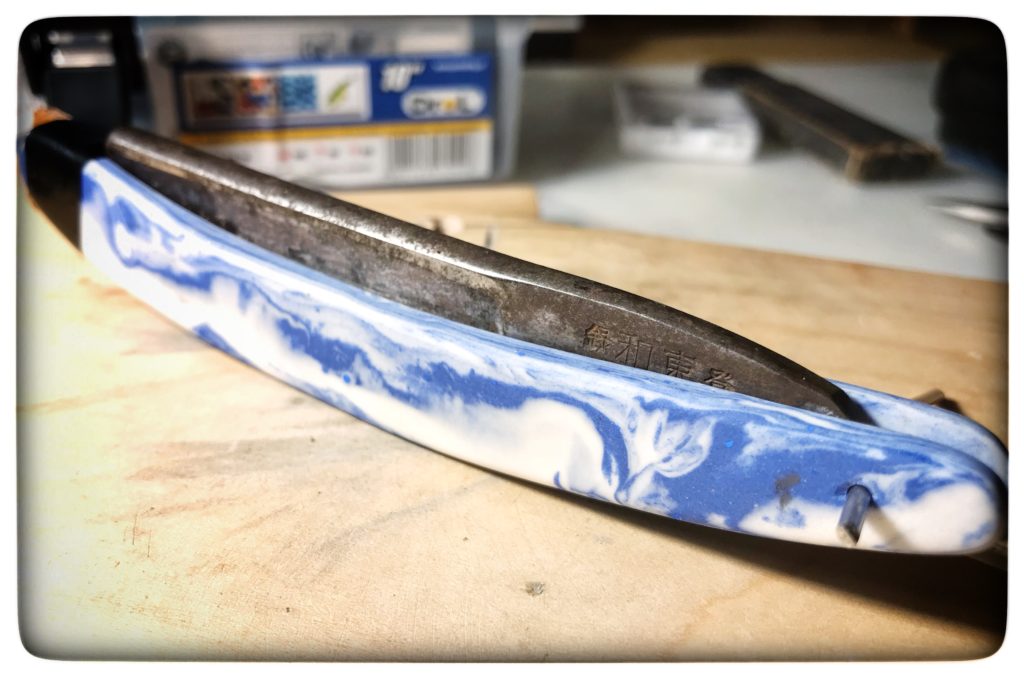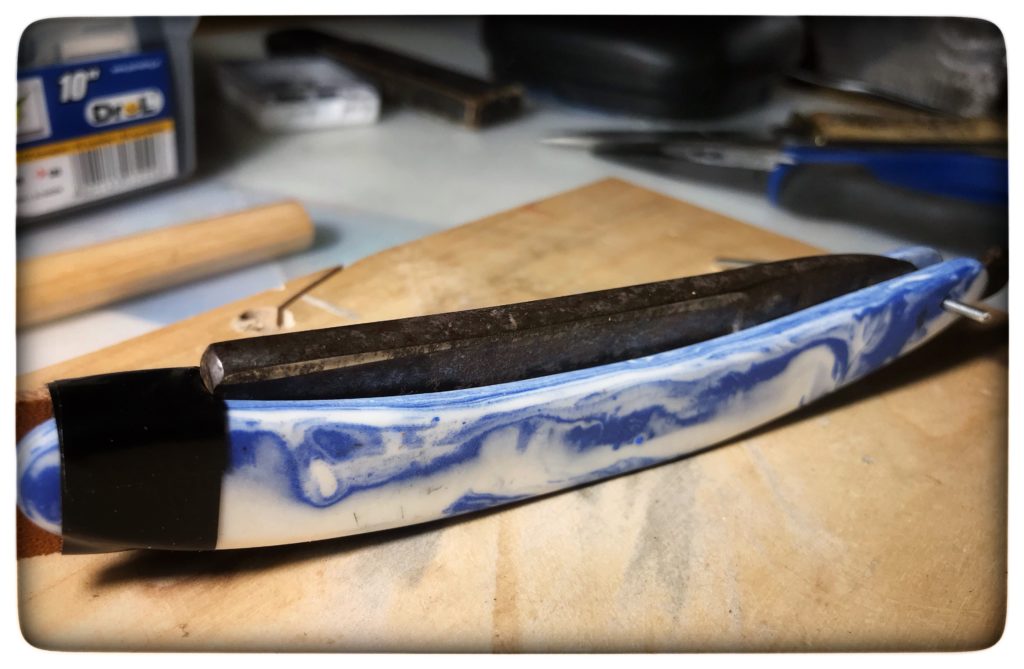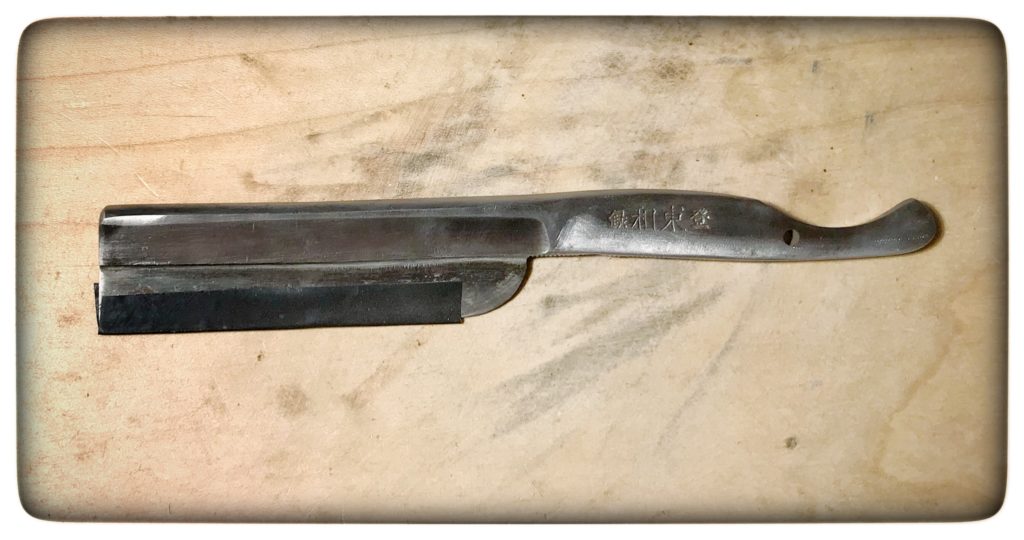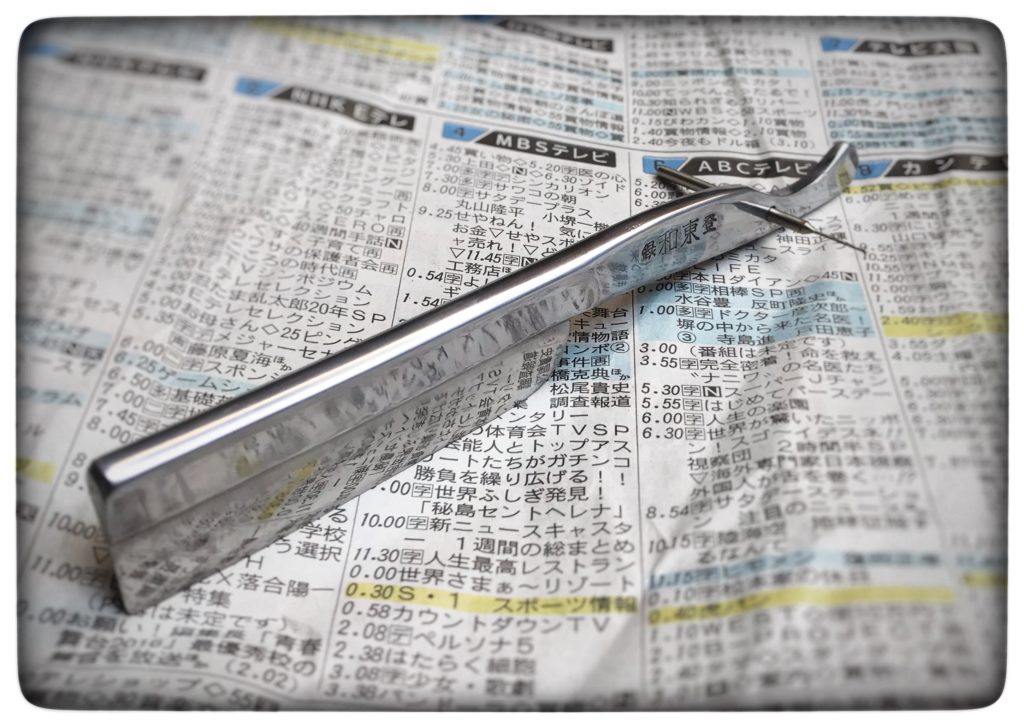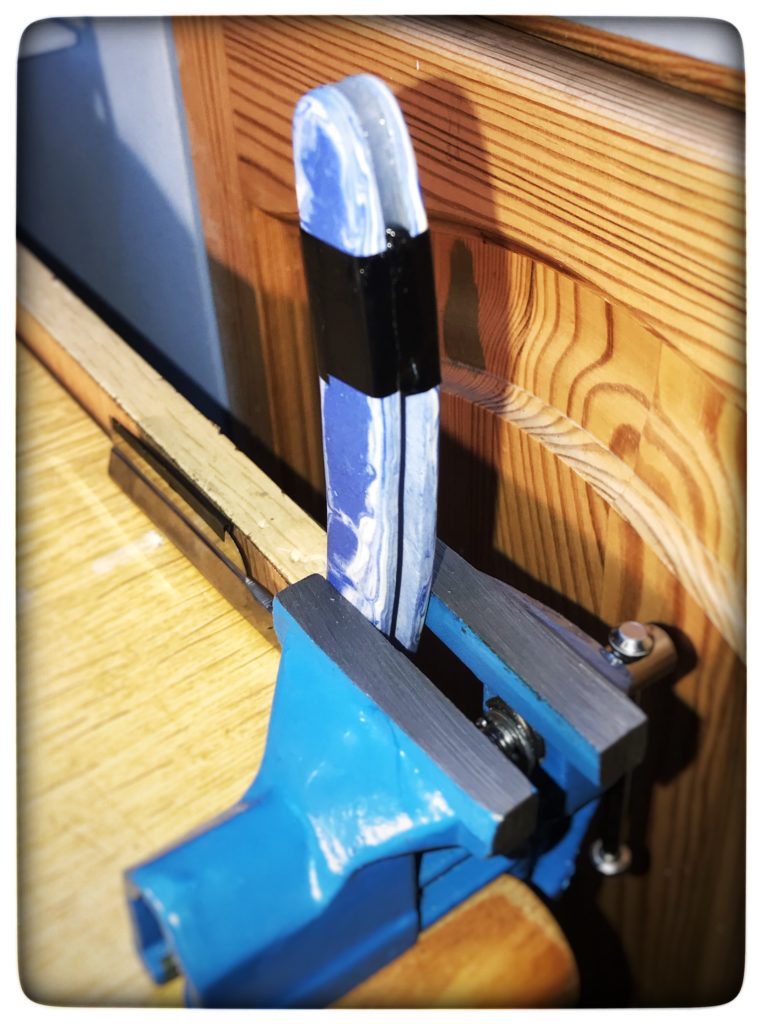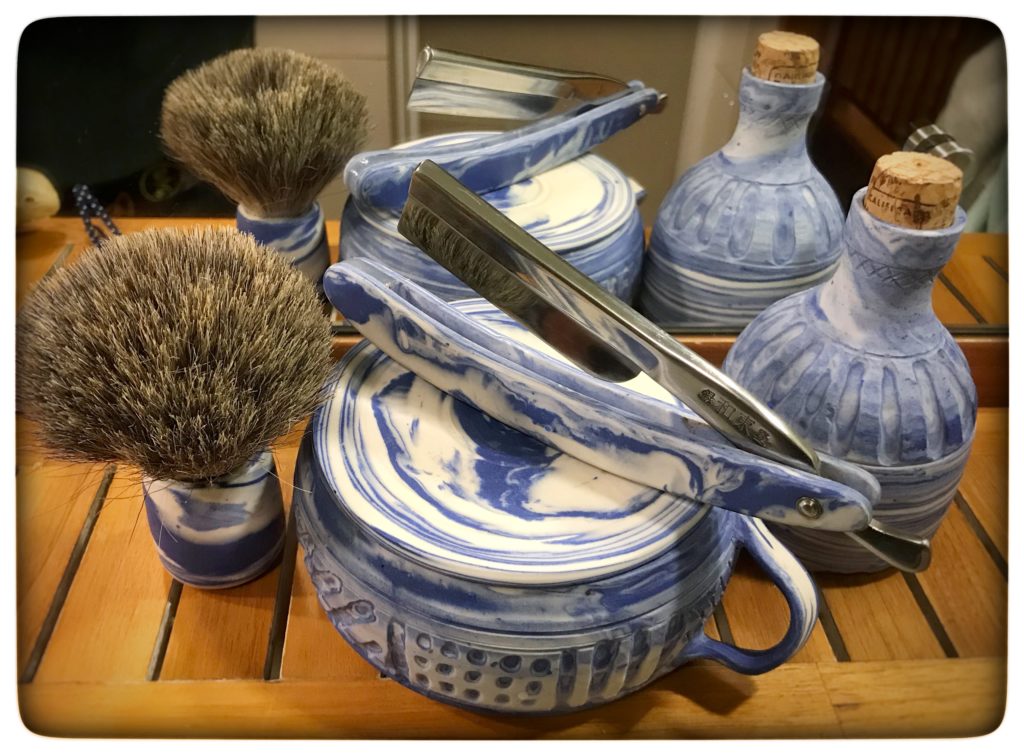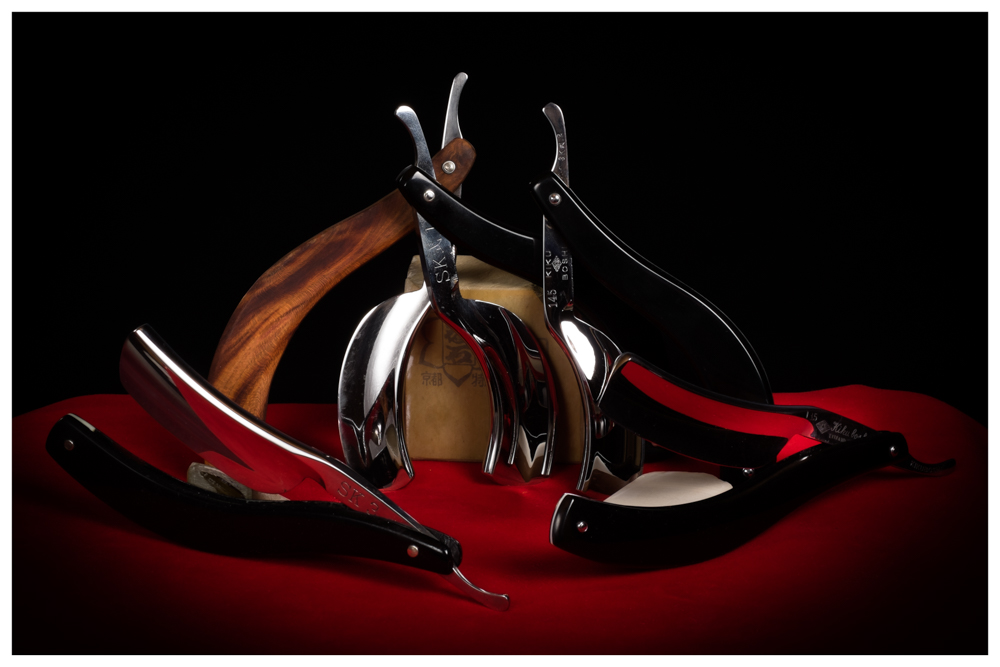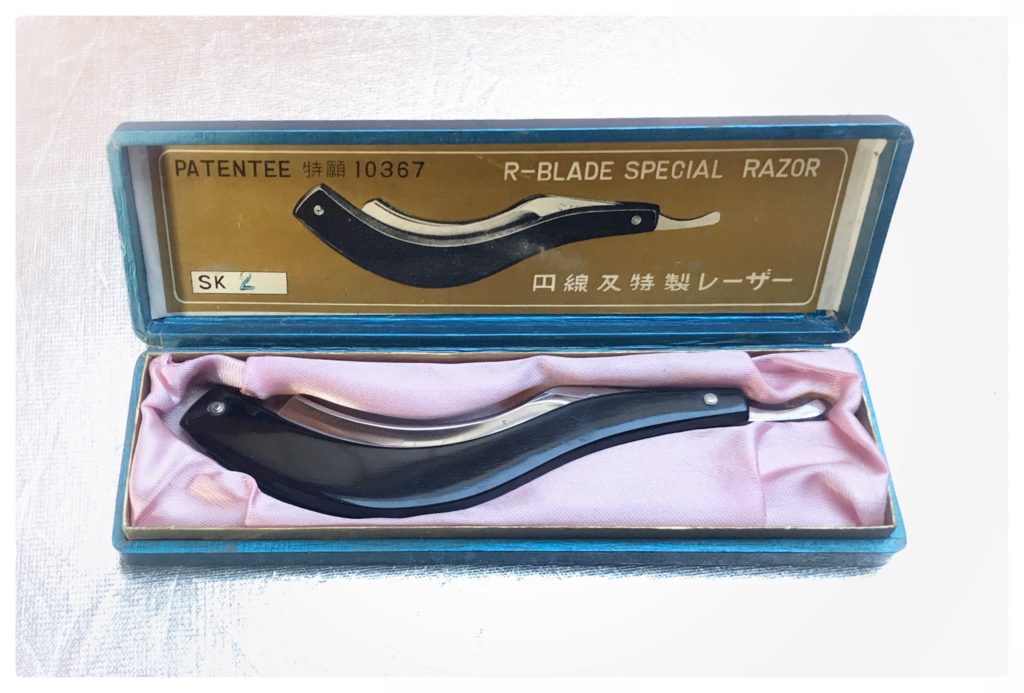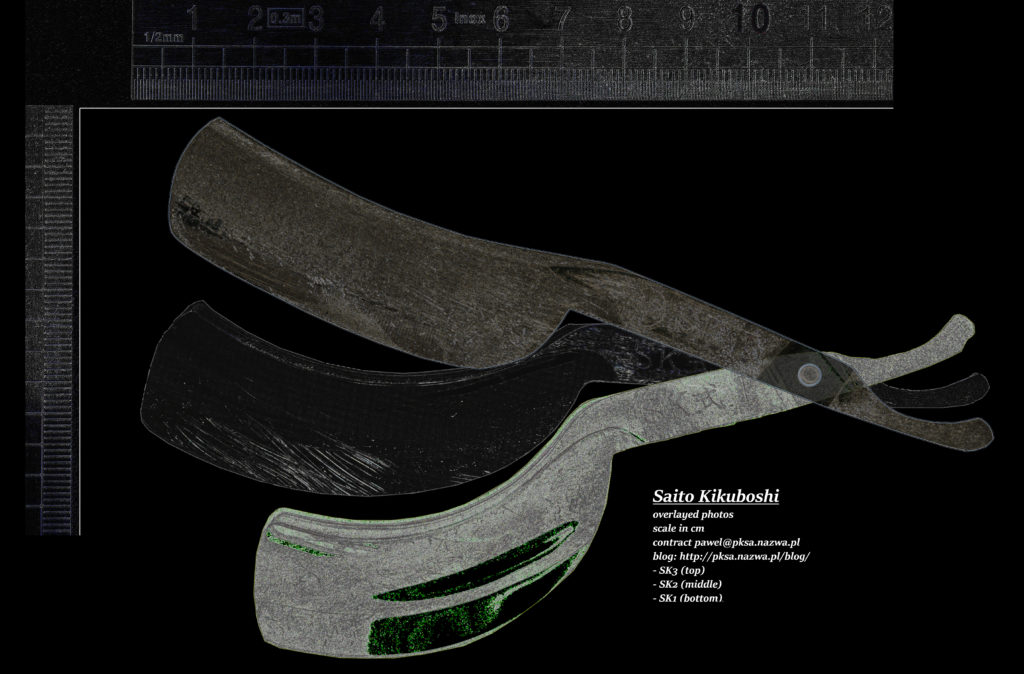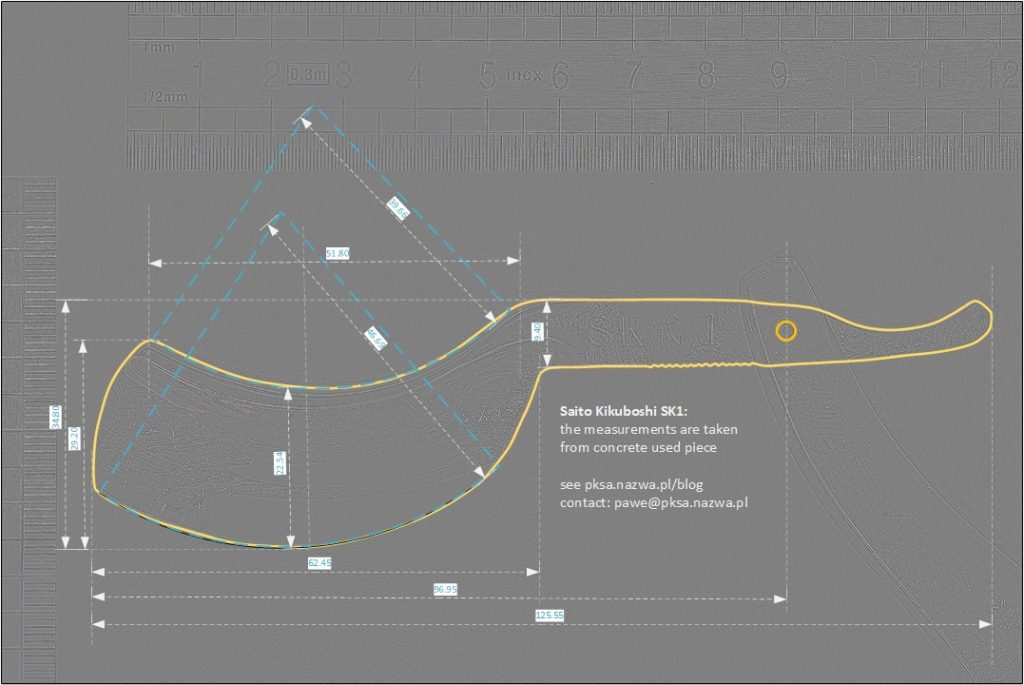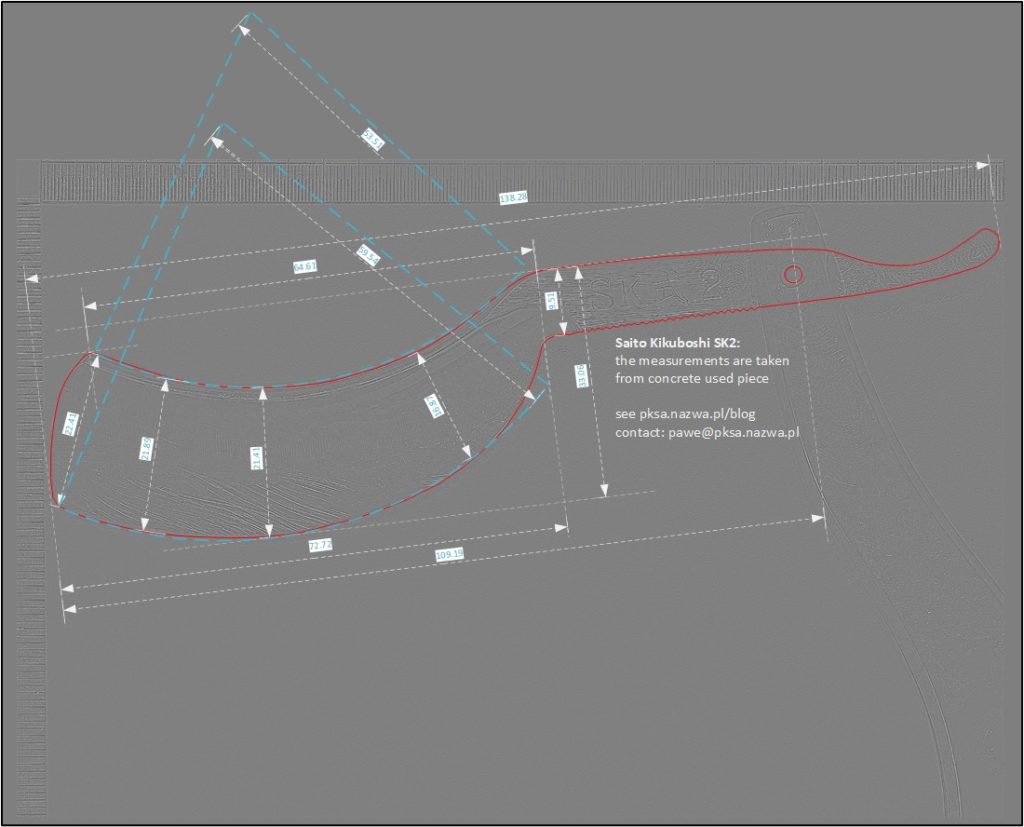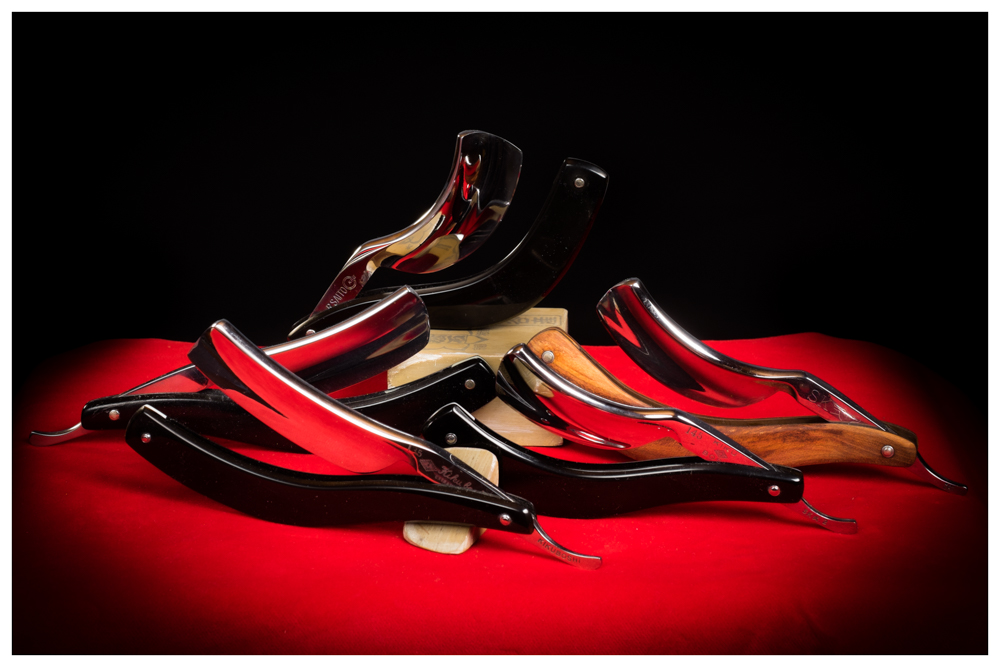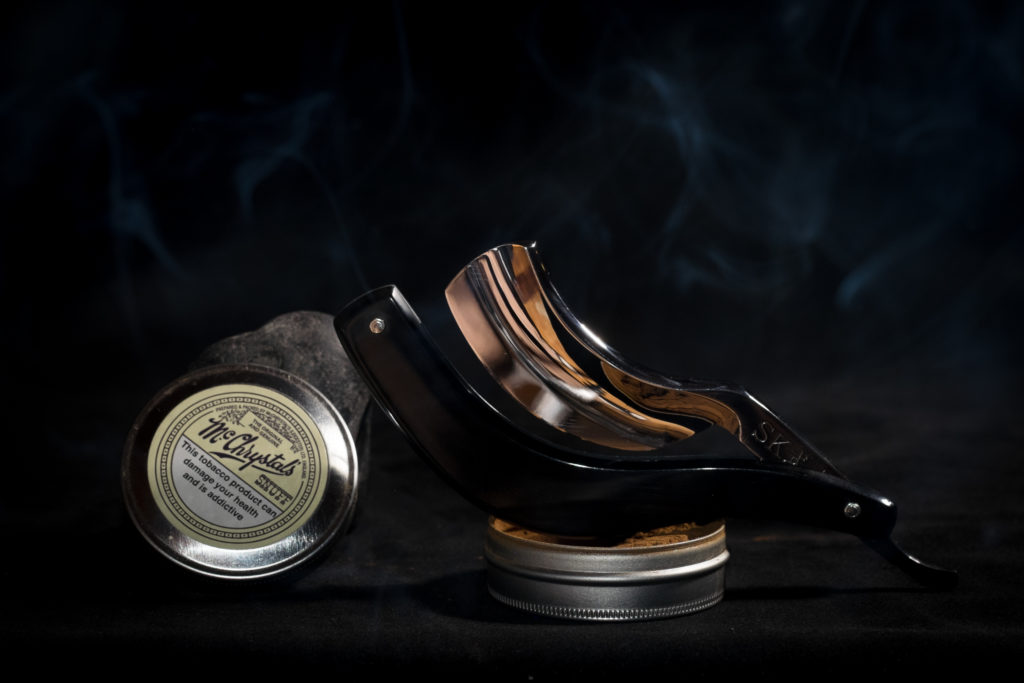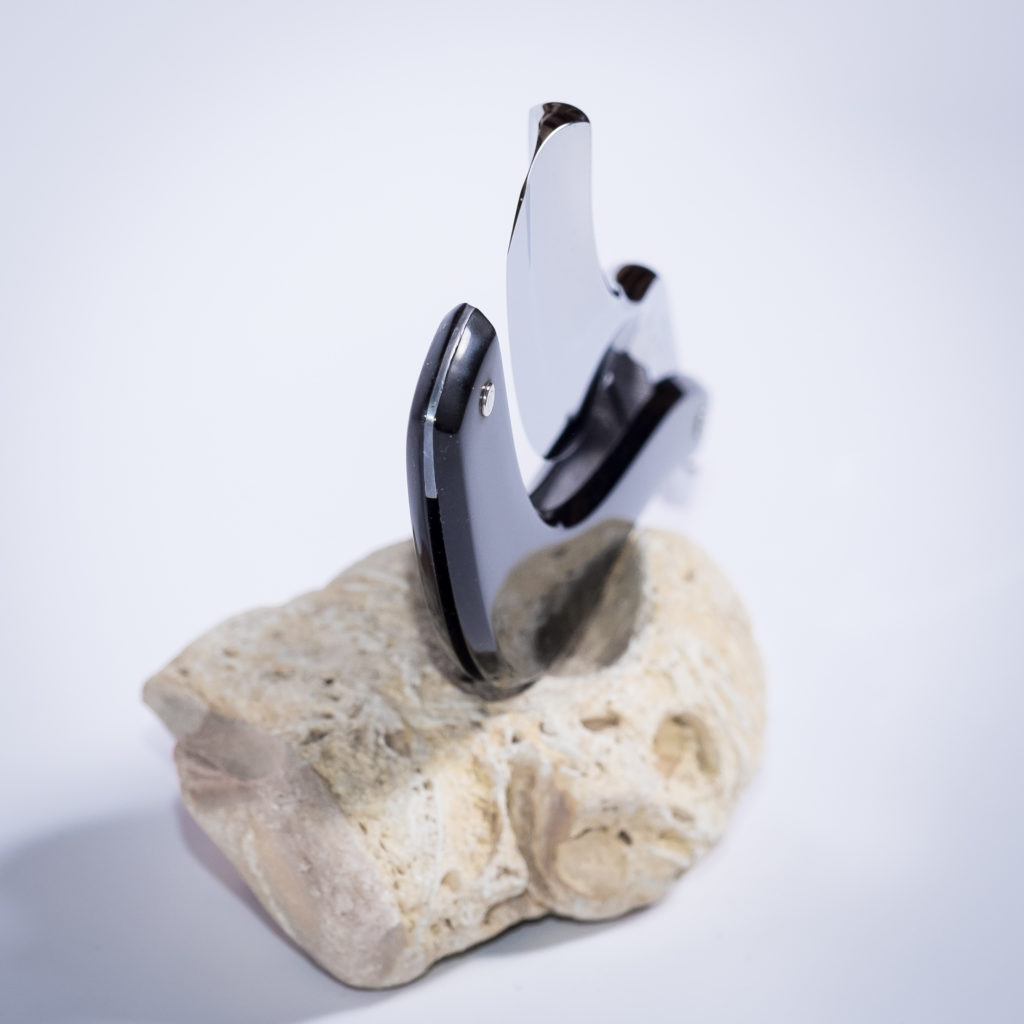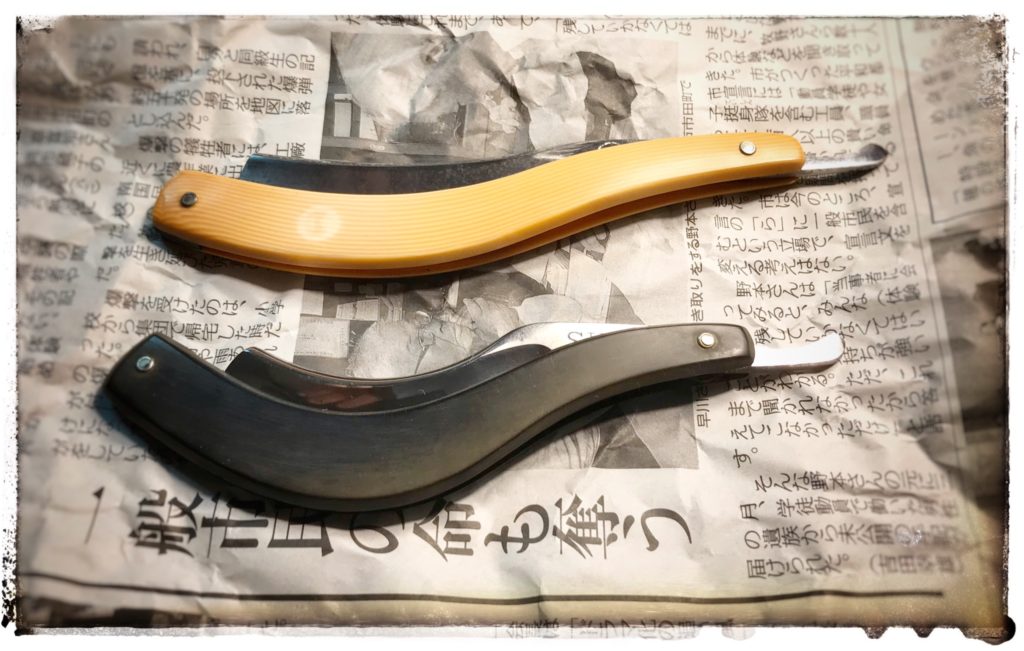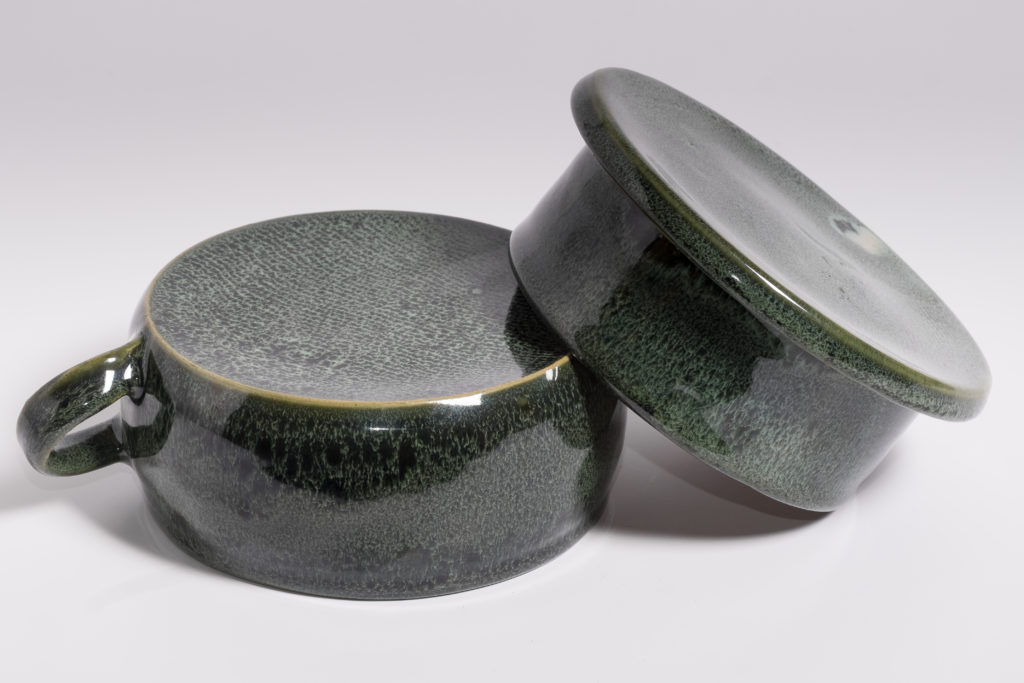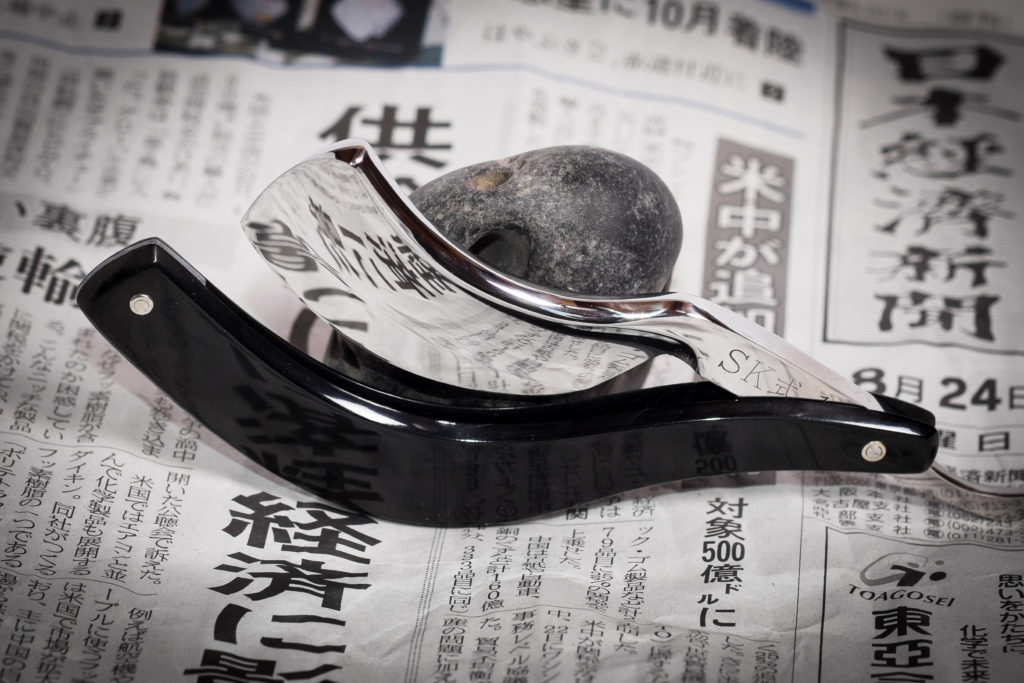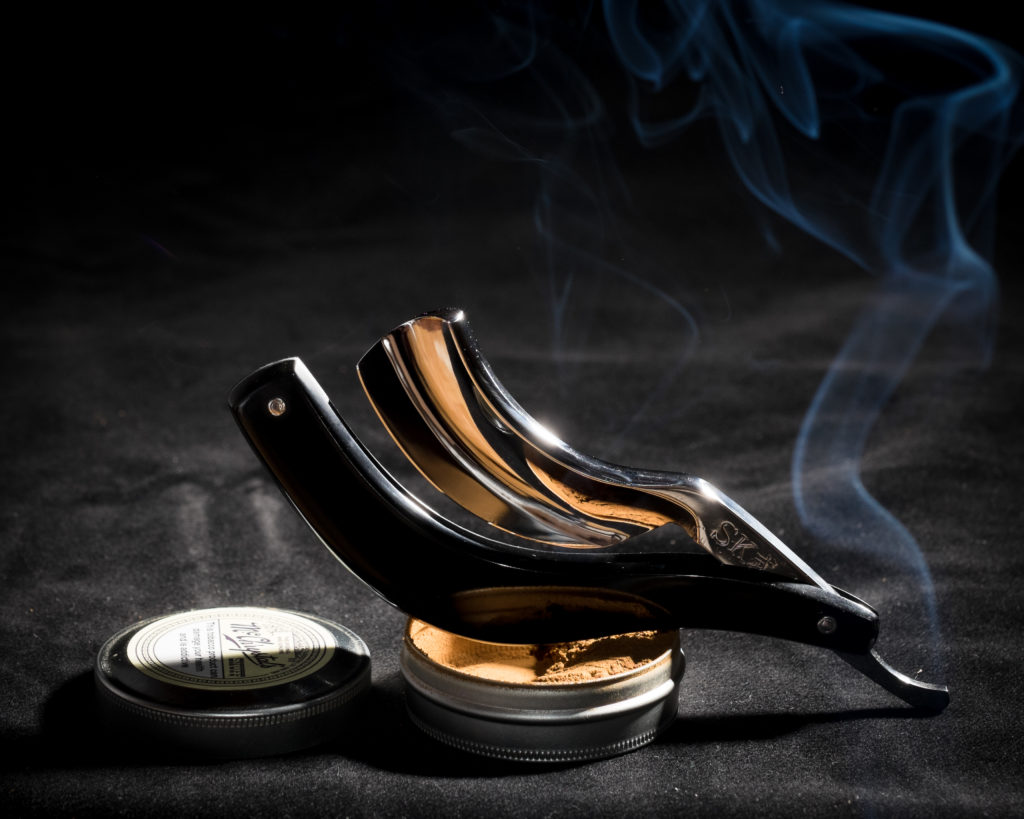Eksperymentalny podział kamienia
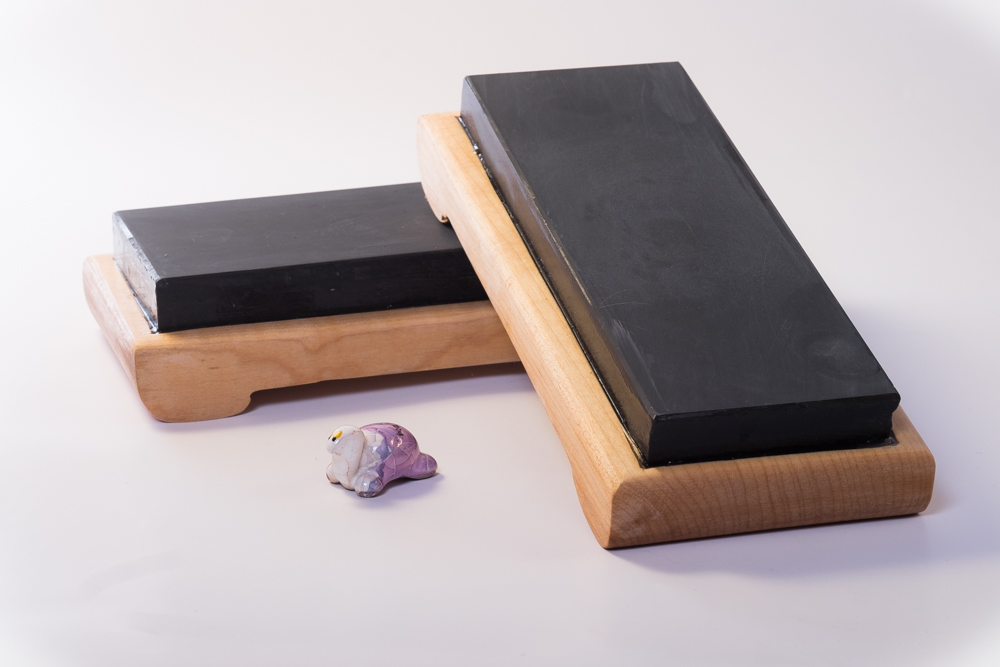
Tsushina to nazwa wyspy niedaleko Nagasaki w Japonii. W gronie pasjonatów jnat, knifemakerów, brzytwiarzy i stolarzy nazwa Tsushima budzi jedno automatyczne skojarzenie do grubych osełek o czarno-szarym kolorze. Mimo, że kopalnia już nie działa, a sprzedaż nowych osełek jest ograniczona do starych zapasów surowców, Tsushima na tle innych jnats w typowym rozmiarze jest całkiem dostępna cenowo (150-200USD u źródła, plus cła i transport w Europie i USA).
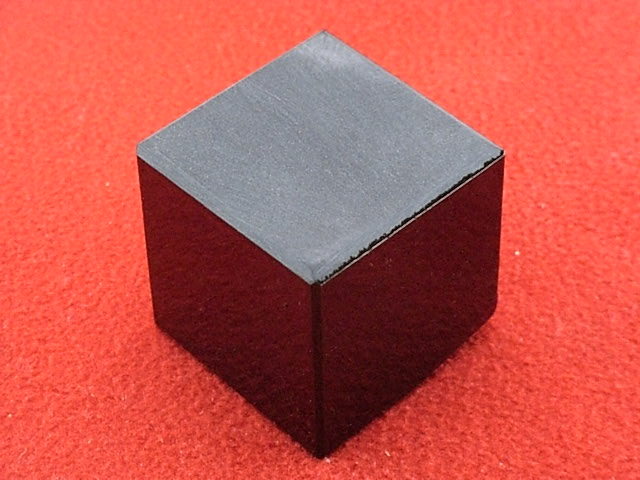
Ta najczęściej spotykana wersja Tsushimy ma kolor czarny, łatwo wytwarza mleczno-szarą zawiesinę i jest kamieniem średnio-miękkim. Kopano ją spod dna morskiego (ciekawe byłoby dowiedzieć się jak radzono sobie kiedyś z takim wydobyciem. Na rynku spotyka się jej dwie formy – grubej cegły oraz sześciennych okruchów do wytwarzania zawiesiny. Mówimy tu o kamieniu określanym mianem Ocean. Istnieje też kamień Tsushima Mountain o kolorze brunatnym w niższej progresji.
Nie zacznę od zachwalania tego kamienia. Byłoby to bardzo mylące dla osób zaczynających z jnats. Chciałoby się mieć jeden kamień, który zarówno formuje, jak i ostrzy, i dodatkowo poleruje. Tak się niestety nie da… Tsushima jest wspaniałym kamieniem korygującym tzn. Nagurą. Różnie określa się jej gradację, czasami mylnie porównując z kamieniami syntetycznymi. Skorą jest Nagurą, naturalnym będzie odniesienie do etapów progresji wg Mikawy (choć z nimi nie ma nic wspólnego). Tsushima pracuje najlepiej w środku skali, na etapie Mejiro i Tenjyou – już po uformowaniu i zasadniczym ostrzeniu. Czego należy się po niej spodziewać? Amatorzy noży i stolarze – wykończenia, amatorzy brzytew – pięknej korekty krawędzi tnącej. Ta korekta to czyszczenie po wcześniejszych etapach, usuwanie rys, wyrównanie apexa. Daje też typową dla jnat powierzchnię przypominającą trawienie metalu. To bardzo dobra oznaka. Wskazuje na to, że kamień zbiera materiał z bardzo małymi zarysowaniami, gęsto i płytko, zamiast zacierania powierzchni i jej wybłyszczania. Jest to więc efekt bardzo “szlachetny”. Nie jest bełkotem stwierdzenie, że Tsushimą można wykończyć brzytwę do dobrego golenia. Takie przykłady można znaleźć na internecie (np. pan Ortiz), i z powodzeniem naostrzyć tak samemu. Trzeba jednak uzbroić się w cierpliwość, zacząć od kamienia odświeżonego płytką diamentową niskiej gradacji, kontyować na własnej zawiesinie wykonanej własnym okruchem Toma i kończyć delikatnie na samej wodzie. Właściwości tnące kończą się na granicy jakiś 6 lub 8 tys grit (zależnie od opinii, bo nie jest to wartość mierzona), ale można doprowadzić kamień do efektu zacierania powierzchni (tzw. burnishing). W praktyce kamieni syntetycznych zwykło się deklarować poziom naostrzenia odnosząc się do gradacji grit użytych kamieni. Pomijając nieporozumienia wynikające z użycia różnych skali grit oraz zachwyty nad błyszczącą powierzchnią boczną krawędzi tnącej, to właśnie na takim etapie kończy wiele brzytw. I co więcej, golą skutecznie. Nie ma co jednak ukrywać, że prawdziwe wykańczanie brzytwy, etap Awesado, zaczyna się od Koma, czyli jeden etap w progresji wyżej. Tu sprawdza się zasada: im lepiej wykonany etap poprzedni, tym lepsze rezultaty w etapie kolejnym. Stąd Tsushima jest kamieniem wdzięcznym i przydatnym. Jest bezpieczna, przewidywalna i bardzo jednorodna. Zdecydowanie warto mieć okruch Tsushimy w swoim zestawie Nagur. Jednak dopiero użycie kamienia pełnowymiarowego zapewnia oczekiwany efekt w sposób komfortowy.
Powyższe dotyczy kamienia najczęściej spotykanego. Posiadam inną Tsushimę (na zdjęciu obok), która jest kamieniem bardzo twardym (oceniam na przynajmniej LV4.5) i w wyższym poziomie progresji. Jak widać na zdjęciu, sprzedawana była wersja nielakowana i cienka (trochę ponad 1cm) bez obaw o pękanie. Czasami zastanawiam się czy to jest ta sama skała. A może jest to żadka Otaniyama….bliźniaczy kamień do Tsushimy o wyższej progresji.
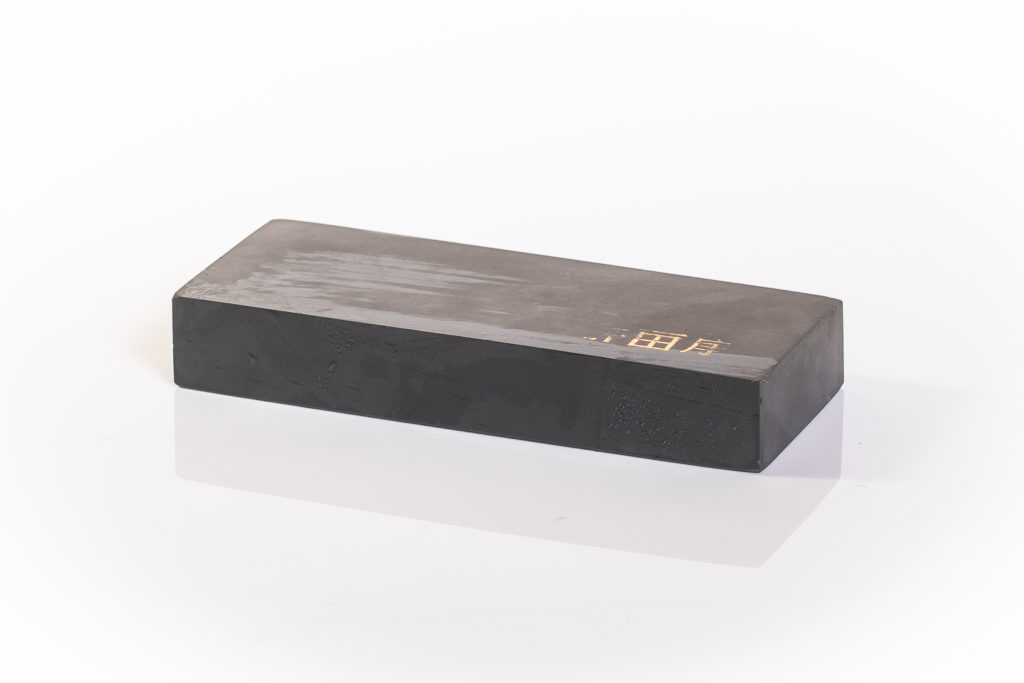
Tsushima jest najczęściej spotykana w rozmiarach 21x8x5 cm i waży sporo ponad 2kg. Grubość 2 cali ma swoje uzasadnienie. Po pierwsze, Tsushima w tej najczęściej spotykanej formie, jest kamieniem podatnym na pękanie. Tak mówi literatura. Potwierdzają to także osoby które znam, a które doświadczyły już tego na własnym kamieniu. Na ewentualne pękanie ma wpływ namaczanie kamienia wodą. Ten kamień “lubi” wodę, choć nie pije tak łapczywie jak niektóre inne podobne kamienie. Nie mniej długie moczenie być dla niego zabójcze. Trudno to sobie wyobrazić ponieważ sterukturą jest bardzo jednorodny i zwięzły. Nie ma żadnych przestrzeni, podziałów warstw ani otworów po gazach (tzw. “Su”). Mimo wszystko, Japończycy, którzy z zasady znają się na kamieniach perfekcyjnie, Tsushimę szczelnie lakują, a czasami dodatkowo lakują po zaciśnięciu jej w papierze ryżowym. Po drugie, jako kamień o miękkim spoiwie, stosunkowo “szybko” się ściera. Może to być zauważalne, przy ostrzeniu dłuteł i noży, kiedy to kamień jest zużywany na określonym fragmencie swojej powierzchni. Stąd łątwiej mogą pojawić się deformacje (łódkowania), które wymagają prostowania całej powierzchni, a więc ścierania jej także tam, gdzie się nie zużywała. Jest to przyspieszony proces zużywania kamienia.
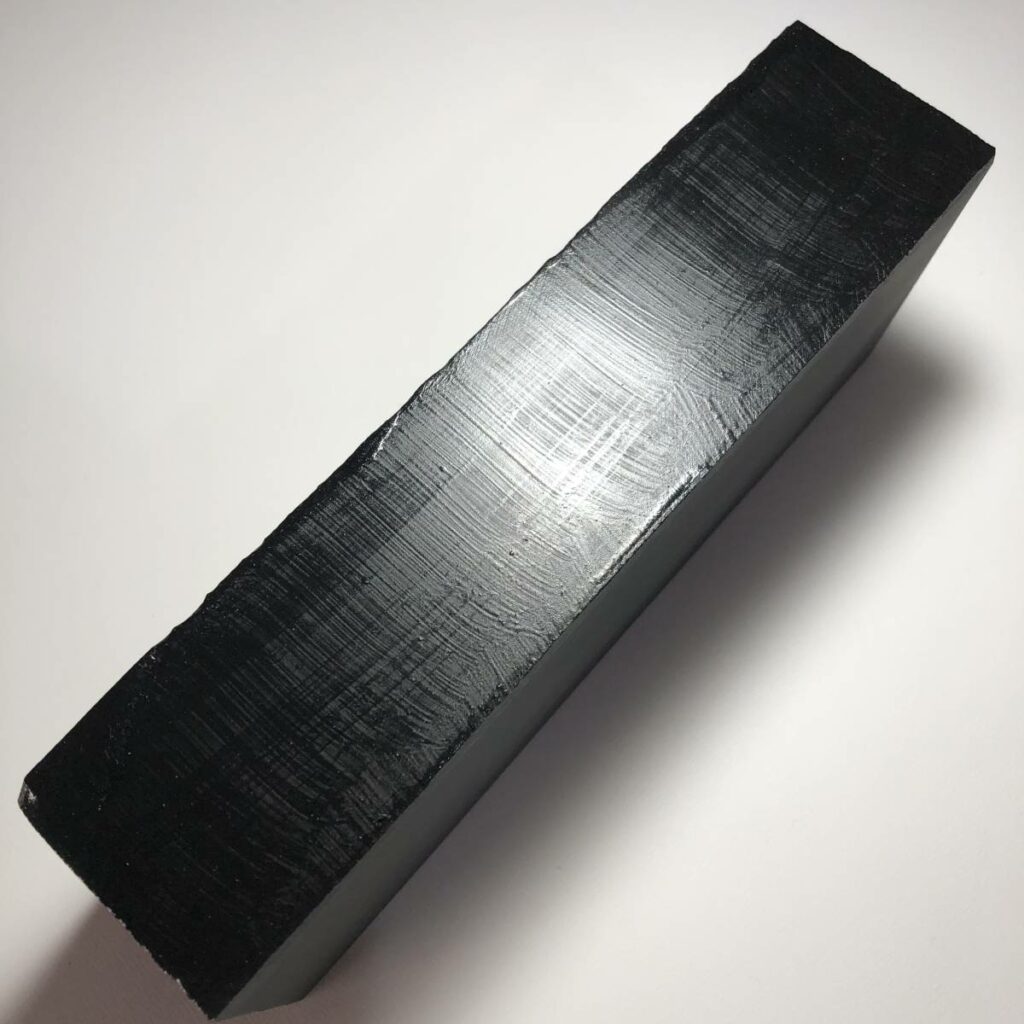
Wiedząc o podatności tego kamienia na pękanie, podjąłem ryzyko rozdzielenia go na dwa cieńsze kamienie. Dlaczego? Przede wszystkim, ani ja w swoim życiu, ani moi synowie, nie zużyliby tak grubego kamienia. Po drugie, nie zużyliby go ponieważ w grę wchodzi ostrzenie wyłącznie brzytew. W takim ostrzeniu zużycie jest znikome, a starciu podlega w zasadzie cała powierzchni. W przeciwieństwie do ostrzenia innych narzędzi, w tym wypadku nie powstają miejscowe wyłódkowania. Po trzecie, w ostrzeniu brzytwy nie stosuje się siły do naciskania narzędzia. Kamień nie jest więc narażony na dodatkowe naprężenia. Po czwarte, ostrzenie brzytwy w jednym stopniu progresji nie jest procesem długim. Nawet jeśli trwa 30 min i w tym okresie kamień jest nasączany wodą, to jest to czas nieporównywanie krótszy od codziennego ostrzenia zestawu 10 dłut i 4 strugów. Kamień nie pękł w czasie rozdzielania. Rozdzielone kamienie nie pękły w czasie obróbki. Dodatkowo zostały dokładnie zalakowane. Aby zapewnić równomierne podparcie, zostały osadzone na drewnianych podstawach. Podstawy są wykonane z bardzo twardego i wysezonowanego drewna jaworowego. Nie powinny się skręcać. Dodatkowo, aby zapewnić równomierność podparcia, kamienie zostały osadzone na poduszce z elastycznego kleju. Jak się to rozwiązanie sprawdza, mogę zaraportować za jakieś 6 miesięcy.
Tymczasem zapraszam do zapoznania się z poniższą dokumentacją tego nietypowego potraktowania Tsushimy.
